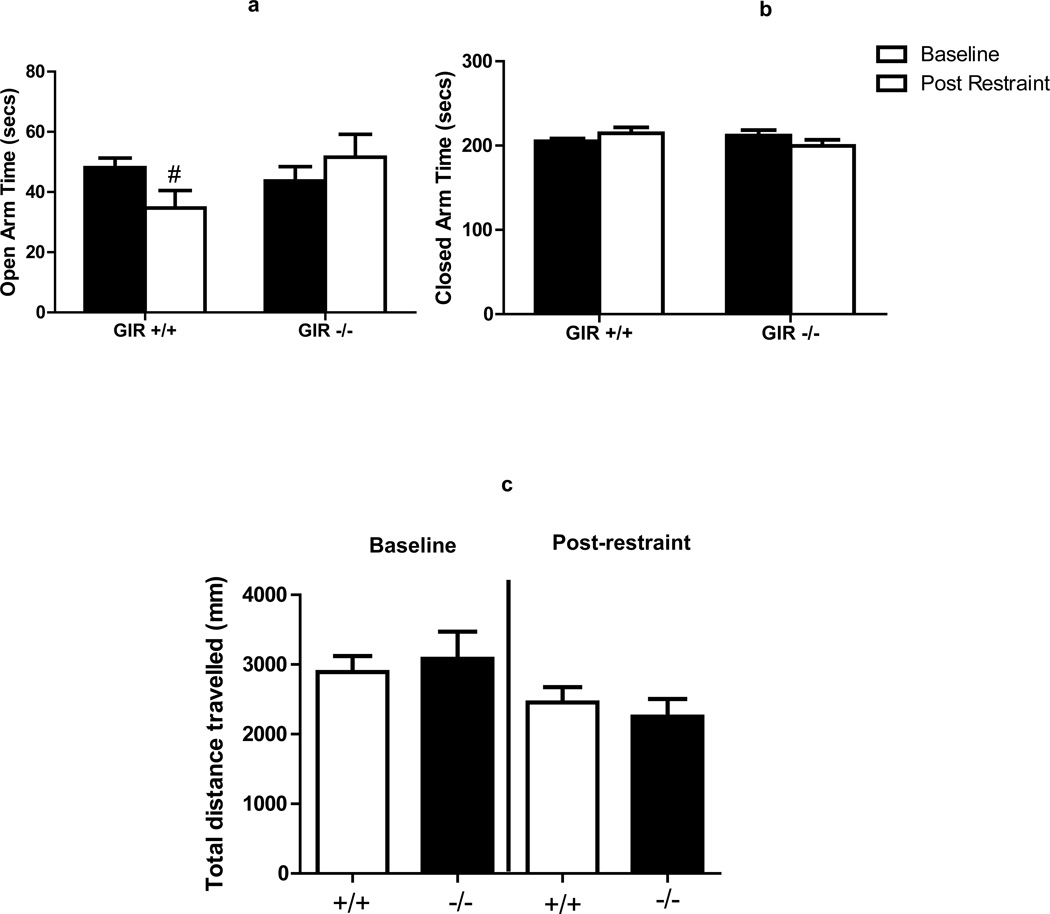Figure 4.
GIR knock out mice (−/−) do not elicit the anxiogenic effects of restraint stress in the elevated plus maze (EPM) test. Time spent in Open (a), Closed (b) arms and motor activity during the total test period (c) for GIR wild type (+/+) and knock out (−/−) mice are shown. Exposure to restraint produced reduced open arm time in +/+ mice (# p=0.08 versus baseline) GIR −/− mice showed no difference in open arm time between baseline and restraint stress. Closed arm time and motor activity were not impacted by stress or genotype. (Panels b and c); Data are mean ± SEM; n= 8–9 baseline n=12–13 restraint stress group.

